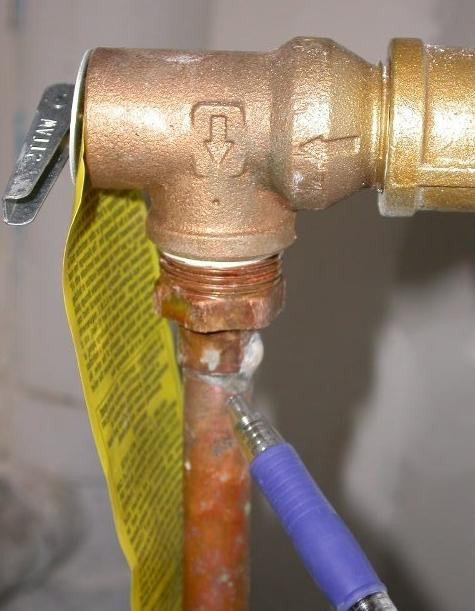Buying your first electric boiler is a landmark event. It is impossible to forget it, if only because for the first time you have to figure it out, why do you need a safety valve for a water heater, a power cord, as well as how to connect and install the entire system.
Subsequently, as a rule, no questions arise, therefore, when replacing a boiler with a new reading, the accompanying instructions are often skipped. Today we’ll talk about why a safety valve for a water heater is needed and what will happen if you “forget” to install it.
Laws of physics
Every person from childhood knows that when heated, objects expand, increasing in volume. The value depends on the material of the object, temperature and environmental conditions - these are the laws of physics. And water is no exception. If there is an increase in volume in a sealed enclosed space, then mechanical damage to the boundaries is quite possible - they will simply break. The safety valve for the water heater, which is necessarily included in the kit for mounting the boiler, serves to protect the walls of the tank from destruction.
If it is absent, then it must be separately purchased and installed. To understand the principle of operation of the safety valve of a water heater, let us mentally assemble the tank model and connect it to the system.
Experiment
Two pipes are brought to the boiler: cold water supply and return already heated. While the taps on the outgoing line are closed, the volume of the tank will be filled with cold water, which will begin to heat up with the heater to the set temperature. It is worth opening the tap, as hot liquid rushes out of the tank, squeezed out by portions of cold coming from the system. However, there are several points that do not allow the boiler to be operated with this inclusion. Firstly, since the entire mass of cold water (in the tank and pipe) is not separated by anything, the heater will constantly work, trying to heat up the entire available volume. Secondly, if for some reason the water disappears in the feed pipe or the pressure drops significantly (not uncommon in domestic systems), then the stored and stored liquid from the tank will by gravity partially flow back into the supply pipe. To prevent this from happening, a check valve is installed on the connection pipe. A spring-loaded plate allows water to pass in only one direction, mechanically separating the two media - the simplest, but incredibly effective solution. What is a safety valve for a water heater for? Let's mentally complicate the task by adding to the design a conventional check valve installed on the feed. In this case, heating will occur without loss, and the disappearance of water in the supply pipe does not threaten anything.

But what happens if the heating value is set not at 20-30 degrees, but at 60-80, as is often the case? In accordance with the well-known law of physics, water will begin to expand, and since all taps are closed, the internal pressure will increase. If the walls of the tank are of poor quality, then they will be locally damaged (burst). And if the material of the tank is chosen correctly, the following happens: pressure and temperature increase, but water does not boil, since at high pressure the point shifts. As a result, it turns out that there may well be water in the boiler with a temperature above 100 degrees. But someone opens the tap. The pressure drops sharply,
the boiling point returns to the usual 100 degrees, there is an avalanche-like evolution of steam, which sharply increases the pressure and the tank breaks. If you can avoid injuries, then this can be considered luck.
The safety valve for a water heater "Ariston"
Safety valves are used to prevent such accidents . They are arranged in such a way that when a certain value of internal pressure is exceeded, an automatic discharge of part of the water (usually a few milliliters) occurs. The circuit of these elements is the same, so there is no difference whether they are installed on an Ariston, Termeks or other boiler. There are two spring-loaded plates inside: one of them acts as a simple check valve on the supply, and the other holds water in the tank until until the pressure exceeds a certain boundary.